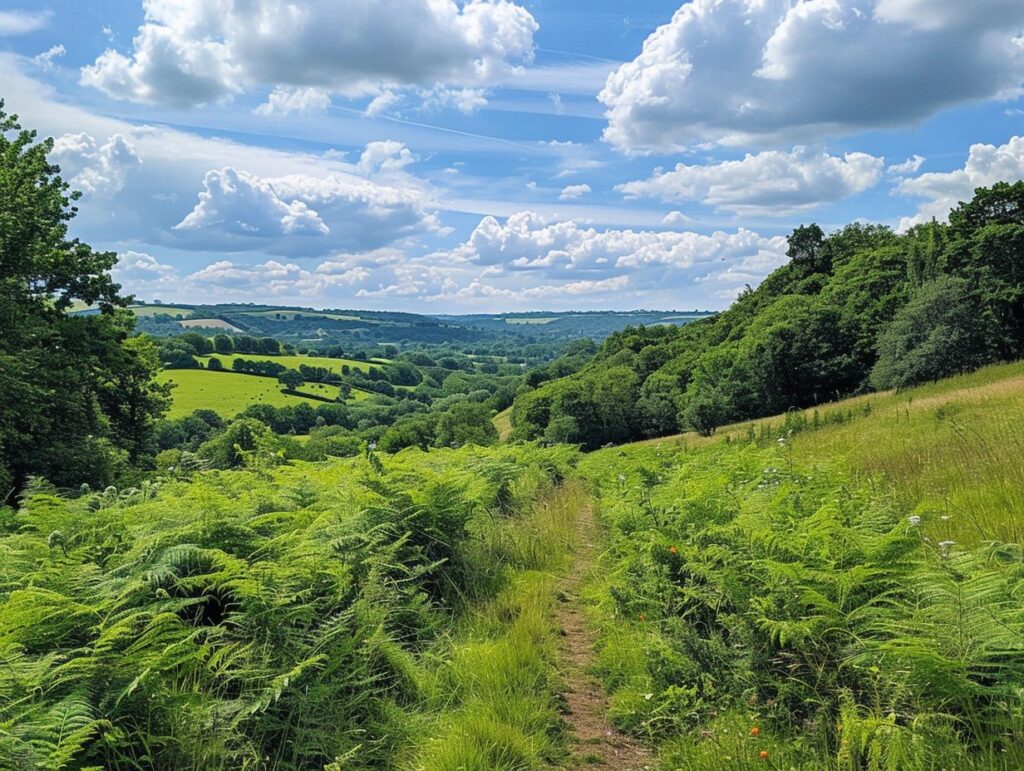Are you an outdoor enthusiast looking to explore the natural beauty of the Chiltern Hills? Look no further!
In this comprehensive guide, we will cover everything you need to know before, during, and after your hike in this stunning region.
From the best time to hike and essential items to bring, to choosing the right trail for your skill level and staying safe during your adventure, we’ve got you covered.
So lace up your hiking boots and get ready for an unforgettable experience in the Chiltern Hills!
Key Takeaways:
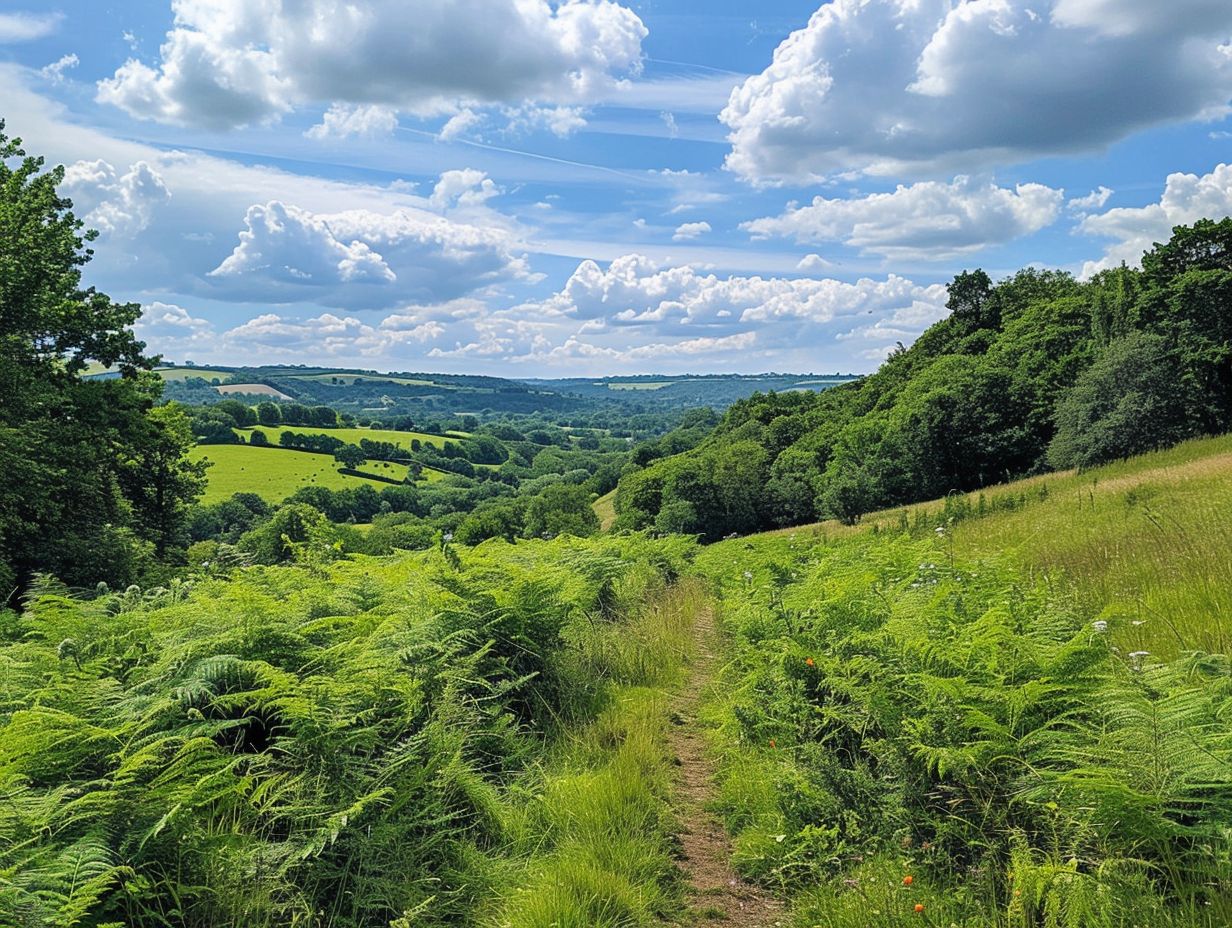
- Choose the right time to hike in the Chiltern Hills, typically during spring and fall, to avoid extreme weather and enjoy the beautiful flora and fauna.
- Bring essential items such as a map, navigation tools, proper footwear, and plenty of water to make your hike in the Chiltern Hills safe and enjoyable.
- Properly prepare physically, plan your route and navigation, and take necessary safety precautions before embarking on your hike in the Chiltern Hills.
What to Know Before Hiking in the Chiltern Hills
When preparing for a hiking adventure in the Chiltern Hills, it is imperative to consider factors such as optimal hiking times, weather conditions, necessary equipment, and safety precautions in order to facilitate a safe and enjoyable experience.
What is the Best Time to Hike in the Chiltern Hills?
The most favourable seasons for hiking in the Chiltern Hills are spring and autumn, characterised by mild weather and breathtaking scenic views accentuated by blooming flowers and vibrant foliage.
Spring presents hikers with the opportunity to behold the enchanting sight of a blanket of bluebells carpeting the forest floor, creating a picturesque scene. As summer approaches, the verdant greenery becomes even more pronounced, and wildlife activity increases, with red kites gracefully soaring in the skies above.
During autumn, the foliage undergoes a captivating transformation, displaying a stunning array of reds, oranges, and yellows, which serve as a magical backdrop for hiking excursions. In winter, the landscape transforms into a tranquil wonderland adorned with frost-kissed trees and icy streams, offering hikers a unique yet equally captivating experience.
What is the Weather Like in the Chiltern Hills?
The climate in the Chiltern Hills region exhibits variations across seasons, characterized by mild temperatures in spring and autumn, warmer conditions in summer, and colder, potentially icy weather in winter.
Typically, average temperatures in the Chiltern Hills range from approximately 2°C during winter to 23°C in summer. The area receives a considerable amount of rainfall, particularly in late autumn and winter.
Hikers are advised to anticipate sudden weather fluctuations and carry appropriate layers to accommodate temperature changes. It is recommended to review weather forecasts before commencing any hiking excursions to ensure preparedness for the prevailing conditions during the journey.
What are the Essential Items to Bring for a Hike in the Chiltern Hills?
When embarking on a hike in the Chiltern Hills, it is imperative to come prepared with essential items, including a map or GPS device, a first-aid kit, appropriate clothing for the weather conditions, durable hiking boots, and an ample supply of water and snacks.
A map or GPS device plays a critical role in navigating the intricate trails of the Chiltern Hills, ensuring the ability to retrace one’s steps to the starting point or locate emergency exits.
A properly equipped first-aid kit is vital for supplying necessary provisions to address minor injuries such as cuts and blisters, providing a sense of security throughout the hiking excursion.
Appropriate clothing suited for the prevailing weather conditions, such as moisture-wicking layers and a waterproof jacket, is essential to ensure comfort and protection against fluctuations in weather patterns.
Sturdy hiking boots offer crucial ankle support and traction on uneven terrain, minimising the likelihood of accidents like slips and falls.
Lastly, carrying an adequate amount of water and snacks is critical for maintaining hydration levels and sustaining energy, particularly during extended hikes or in warm climatic conditions.
Choosing a Hiking Trail in the Chiltern Hills
The selection of a hiking trail within the Chiltern Hills is contingent on factors such as one’s skill level, personal interests, and the desired nature of the experience sought. This entails decisions ranging from a relaxed meander along the Thames Path to a more vigorous trek on the Ridgeway.
What are the Different Types of Trails in the Chiltern Hills?
The Chiltern Hills present a range of trails that cater to various difficulty levels, from leisurely walks to challenging hikes. Among the favoured routes are the Ridgeway, Thames Path, and local trails like the Ashridge Estate and Chess Valley.
The Ridgeway trail, steeped in historical significance as one of Britain’s oldest trails, spans approximately 87 miles, offering hikers a journey through magnificent landscapes and ancient sites. Participants can anticipate stunning vistas of the undulating hills and encounters with historical landmarks such as ancient forts en route.
Conversely, the Thames Path, which runs parallel to the renowned river, provides a more relaxed walking experience, affording views of charming riverside towns and habitats for diverse wildlife.
Trails like the Ashridge Estate boast dense woodlands and a variety of flora and fauna, serving as an ideal destination for nature enthusiasts seeking an immersive experience in a biodiverse ecosystem.
How to Choose the Right Trail for Your Skill Level?
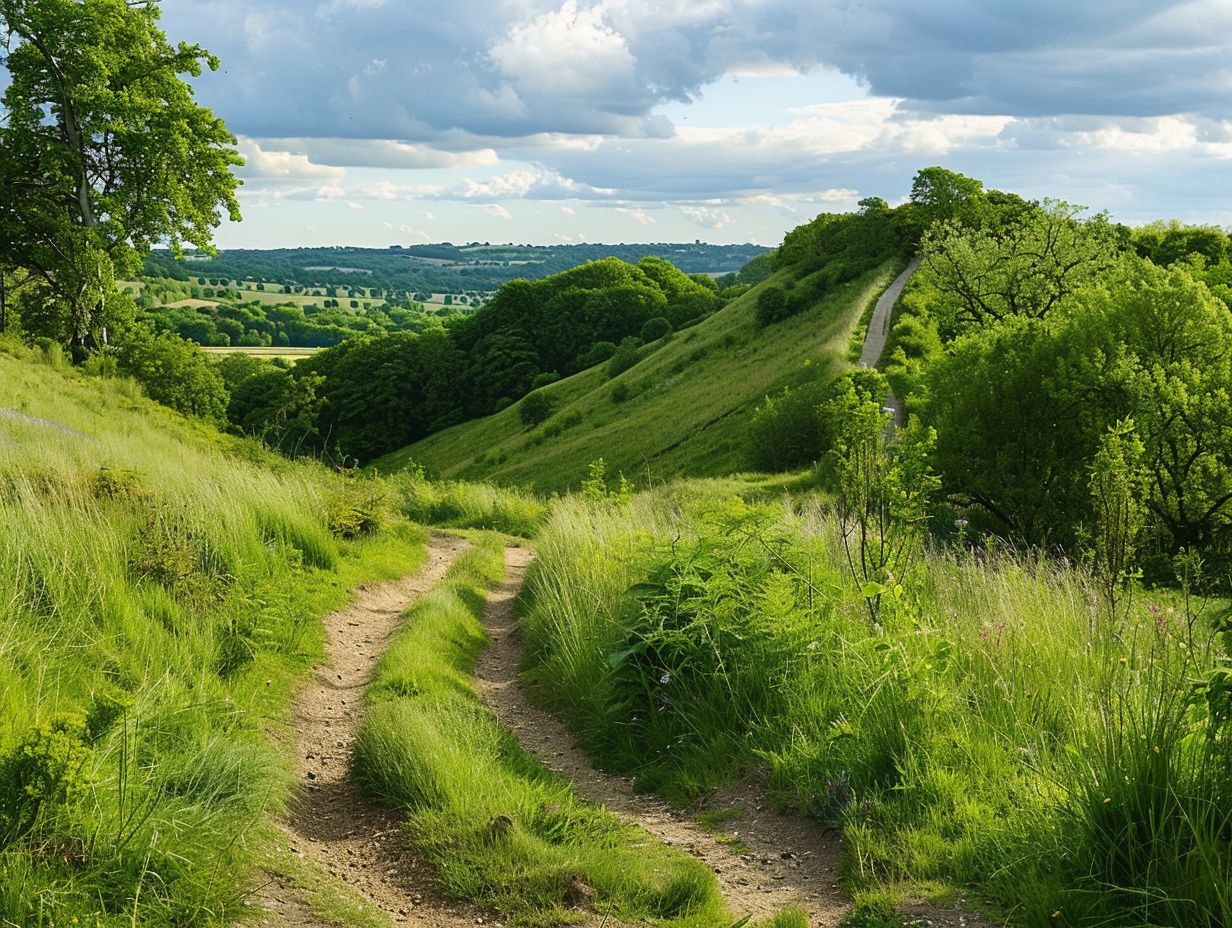
Selecting the appropriate trail in the Chiltern Hills according to your skill level necessitates consideration of various factors such as trail difficulty, length, elevation changes, and personal physical fitness and experience.
Before initiating a hiking expedition, it is imperative to conduct a thorough assessment of your fitness level and experience. For individuals at a beginner level, trails like the Ivinghoe Beacon Circular Walk present a moderate level of difficulty coupled with captivating vistas.
Intermediate hikers may find enjoyment along the Wendover Woods Trail, which offers a slightly elevated challenge. Advanced hikers, seeking to push their limits, can opt for the Ridgeway National Trail.
Engaging with trail guides and participating in local walking groups can enrich your hiking journey, offering both enhancement and support throughout your exploration.
What are the Must-See Sights Along the Trails in the Chiltern Hills?
Some noteworthy attractions to explore while traversing the trails in the Chiltern Hills include the esteemed Ashridge Estate, the expansive views from Ivinghoe Beacon, and the serene landscapes of the Chess Valley.
The Ashridge Estate, a historical former royal hunting ground, holds a significant heritage dating back to the 13th century, featuring the grand Ashridge House and charming gardens. Ivinghoe Beacon provides visitors with sweeping vistas of the nearby countryside, making it a favoured location for leisurely activities such as picnicking and photography.
The tranquil Chess Valley appeals to nature enthusiasts, offering diverse wildlife and serene walking routes. These trails are equipped with convenient facilities such as picnic areas, visitor centres, and well-defined signposts for seamless navigation.
Preparing for Your Hike in the Chiltern Hills
Thorough preparation for a hike in the Chiltern Hills requires physical conditioning, meticulous route mapping, and adherence to safety measures to ensure a smooth and enjoyable excursion along the trails.
What are the Physical Preparations Needed for a Hike in the Chiltern Hills?
Preparations for hiking in the Chiltern Hills entail a regime of physical exercises aimed at improving cardiovascular endurance, enhancing muscular strength, and promoting flexibility to mitigate the risk of injuries.
- Specific activities such as brisk walking, uphill hiking, cycling, and interval training are recommended to enhance cardiovascular fitness.
- Incorporating bodyweight exercises like squats, lunges, and planks can bolster lower body strength, essential for navigating challenging terrains.
- Flexibility exercises, such as yoga or Pilates, contribute to maintaining muscle flexibility and reducing the likelihood of muscle soreness.
- It is imperative to progressively intensify the duration and rigour of these exercises to cultivate stamina and fortitude for extended hikes.
Adequate physical preparation not only diminishes the susceptibility to injuries but also enriches the hiking experience by enabling individuals to fully engage with the natural splendour of the Chiltern Hills.
How to Plan Your Route and Navigation in the Chiltern Hills?
Careful planning of your route and navigation through the Chiltern Hills requires a thorough examination of maps, utilisation of GPS devices, and acquainting oneself with trail markers and significant landmarks to ensure adherence to the intended path during the hiking expedition.
Maps serve as an critical aid in visualising the journey and comprehending the terrain. When utilising maps, it is imperative to take note of vital elements such as contour lines, rivers, and landmarks to facilitate orientation.
GPS devices offer the advantage of real-time location tracking and can serve as a valuable supplement to traditional maps. Trail markers, whether manifested through markings on trees or signposts, provide essential guidance on the ground. To maintain orientation, it is advisable to periodically survey the surroundings and compare them to the map or GPS.
In case of becoming disoriented, it is advisable to retrace one’s steps to the last recognised location or signal for assistance employing tools such as a whistle or phone. Adequate preparation and vigilance are pivotal to ensuring a successful and secure hiking experience.
What Safety Measures Should You Take Before Hiking in the Chiltern Hills?
Before embarking on a hike in the Chiltern Hills, it is important to adhere to safety protocols. These measures include informing a trusted individual of your planned itinerary, checking the weather forecast for the area, and ensuring the presence of a first-aid kit and emergency contact information.
Furthermore, it is imperative to dress appropriately and wear suitable footwear that is conducive to the terrain. Staying hydrated by carrying an ample supply of water and packing high-energy snacks for sustenance are essential practices to uphold during the excursion.
Individuals should exercise caution in their surroundings and refrain from hiking alone in remote regions. In case of an emergency, it is crucial to remain composed and evaluate the circumstances at hand. Equipping oneself with a map and compass, or a GPS device, is essential for effective navigation.
Moreover, acquiring a basic understanding of first aid techniques is recommended. This knowledge equips individuals with the ability to identify and address common hiking-related injuries that may arise during the course of the hike.
During Your Hike in the Chiltern Hills
While hiking in the Chiltern Hills, it is essential to prioritise hydration, exhibit mindfulness towards local wildlife, and familiarise oneself with emergency procedures to guarantee a secure and pleasant outing.
What to Do if You Encounter Wildlife on the Trails?
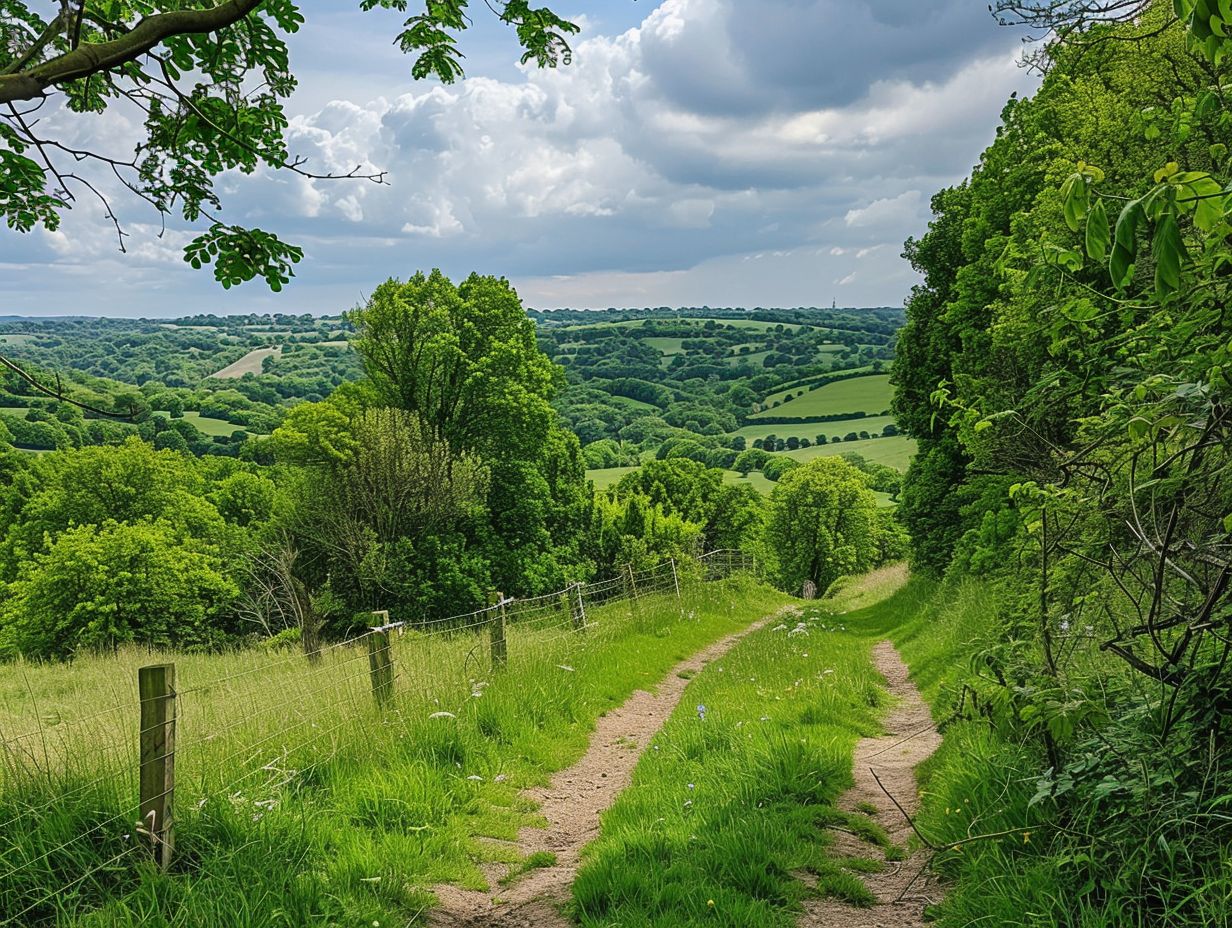
When encountering wildlife on the trails in the Chiltern Hills, it is imperative to exhibit composure, maintain a safe distance, and refrain from feeding or approaching the animals. This approach ensures the safety of both individuals involved.
It is crucial to recognise that various animals necessitate different responses. In the presence of deer, it is advised to appreciate them from a distance and avoid sudden movements that may startle them. In the case of magnificent red kites gliding overhead, one should admire their graceful flight while keeping a safe distance.
Smaller mammals such as squirrels or rabbits may cross your path; in such instances, it is recommended to quietly observe them without disrupting their natural behaviour. By showing respect towards wildlife and adhering to a respectful distance, individuals can partake in a harmonious coexistence with the diverse animal inhabitants of the Chiltern Hills.
How to Stay Hydrated and Energised During Your Hike?
Ensuring adequate hydration and sustained energy levels during a hike in the Chiltern Hills necessitates carrying a sufficient quantity of water, consuming electrolyte-enriched beverages, and partaking in energy-boosting snacks like nuts, fruits, and granola bars.
A crucial recommendation to bear in mind is to maintain a regular intake of water, rather than waiting until thirst presents itself. Delaying hydration may indicate a state of slight dehydration within the body. It is advisable to consume between 0.5 to 1 litre of water per hour of hiking, adjusting this volume based on the intensity of the physical exertion and prevailing weather conditions.
Symptoms of dehydration encompass a parched mouth, fatigue, headaches, and urine with a dark hue. To avert dehydration, it is prudent to utilise a hydration pack or carry a reusable water receptacle. Additionally, pack snacks rich in fibre and protein to sustain energy levels, such as trail mix, jerky, or protein bars.
What to Do in Case of Emergencies During Your Hike?
In case of emergencies arising during your hike in the Chiltern Hills, it is imperative to maintain composure, utilise the first-aid kit at your disposal, and promptly reach out to emergency services if necessary, ensuring to furnish them with precise details of your whereabouts.
Should you or a member of your party necessitate medical attention, the initial course of action should entail a thorough evaluation of the circumstances and mitigation of any immediate hazards. Provision of basic first aid, such as the application of pressure to wounds or stabilisation of injuries, should be promptly administered.
Upon addressing immediate exigencies, access your first-aid kit and utilise its contents to render further aid. When communicating with emergency services, articulate a clear depiction of the emergency nature, the number of individuals affected, and any pertinent medical conditions or allergies that emergency responders should take into account for swift and efficient aid provision.
After Your Hike in the Chiltern Hills
After your walk in the Chiltern Hills, it is essential to thoroughly clean up, dispose of waste responsibly, and find nearby accommodation or dining places to relax and recharge.
How to Properly Clean Up and Dispose of Waste After Your Hike?
Proper waste management and disposal following a hike in the Chiltern Hills necessitate the comprehensive removal of all refuse, utilisation of designated waste receptacles, and adherence to Leave No Trace principles to uphold the cleanliness and unspoilt nature of the trails.
When discarding your waste, it is imperative to utilise a durable, sealable bag to contain any refuse. If feasible, segregate recyclable materials and ensure the removal of all items, inclusive of food wrappers and sanitary items. Strict adherence to the ‘pack it in, pack it out‘ protocol is essential for preserving the pristine landscape of the Chiltern Hills.
Furthermore, it is paramount to leave no evidence of your presence behind, including minute items such as fruit peels. Waste disposal amenities are available at various trailheads within the Chiltern Hills, necessitating strategic planning of your hike to responsibly utilise these resources.
Where to Find Accommodations and Local Eateries After Your Hike?
After completing a hike in the Chiltern Hills, individuals have the opportunity to avail themselves of various accommodations and local dining options in neighbouring towns like Chesham, Prestwood, and Christmas Common, which offer comfortable lodging and gastronomic delights.
In Chesham, The Chequers Inn stands out as a charming countryside establishment renowned for its warm hospitality and traditional English cuisine. Those seeking a cosy stay in Prestwood may opt to reserve accommodations at The Nags Head, a quaint bed and breakfast offering picturesque views.
Furthermore, in Christmas Common, The Fox and Hounds is a favoured destination known for its hearty pub dinners and comfortable lodgings. These establishments frequently provide amenities such as complimentary Wi-Fi, parking facilities, and inclusive breakfast offerings.
Visitors are encouraged to explore nearby local attractions including the historical Chiltern Open Air Museum and the picturesque Chiltern Cycleway.
What are the Other Activities and Attractions in the Chiltern Hills?
The Chiltern Hills offer a diverse range of activities and attractions beyond hiking, including cycling, horse riding, rock climbing, and exploration of the historical sites and natural beauty of the region.
Cycling enthusiasts have the opportunity to explore picturesque routes along the Grand Union Canal or meander through quaint villages such as Wendover or Great Missenden.
Horse riding is a favoured option for those seeking a unique perspective of the stunning landscapes. Rock climbing enthusiasts can challenge themselves on the impressive limestone formations prevalent in the area.
History enthusiasts can delve into the region’s heritage by visiting sites like the Roald Dahl Museum or the Chiltern Open Air Museum. Visitors are encouraged to take advantage of equipment rentals and experienced guides available at local outdoor shops or activity centers to fully experience these outdoor adventures.
Frequently Asked Questions
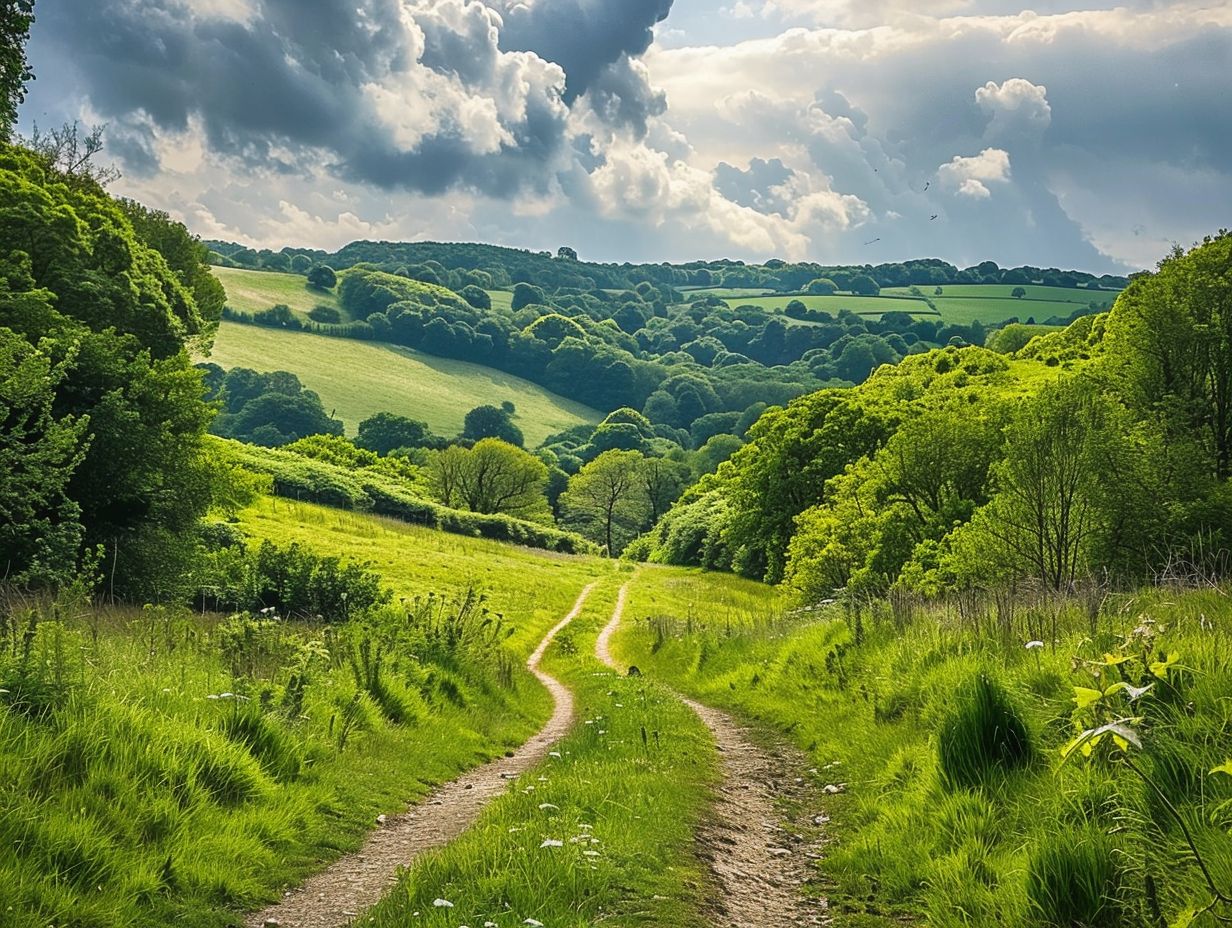
What are the Chiltern Hills?
The Chiltern Hills are a range of rolling hills in southern England, stretching from Oxfordshire in the west to Buckinghamshire and Bedfordshire in the east. They are known for their beautiful landscapes, diverse wildlife, and charming villages.
How do I get to the Chiltern Hills?
There are several train stations and bus services that connect to different parts of the Chiltern Hills. If you are driving, there are plenty of parking areas available at most trailheads. It is also possible to join a guided tour or hire a taxi to take you to specific locations.
What are the best hiking trails in the Chiltern Hills?
The Chiltern Hills offer a network of well-marked and maintained hiking trails, ranging from easy strolls to challenging hikes. Some popular routes include the Ridgeway National Trail, the Chiltern Way, and the Icknield Way Path. You can also find many circular routes that start and end in picturesque villages.
What should I bring on a hike in the Chiltern Hills?
It is essential to be prepared for your hike in the Chiltern Hills. Make sure to bring comfortable walking shoes, a map or guidebook, plenty of water, and some snacks. It is also a good idea to pack a rain jacket and sunscreen, as the weather can be unpredictable.
Are dogs allowed on the hiking trails in the Chiltern Hills?
Yes, dogs are allowed on most hiking trails in the Chiltern Hills, but they must be kept on a leash at all times. Some areas, such as nature reserves, may have specific rules for dogs, so it is best to check before you go. Remember to clean up after your furry friend to help keep the hills clean and safe for everyone.
Are there any camping options in the Chiltern Hills?
Yes, there are several campsites and campgrounds located in or near the Chiltern Hills. If you are planning to camp, make sure to check the rules and regulations for the specific area you plan to stay in. Wild camping is not allowed in the Chiltern Hills, so be sure to reserve a spot at one of the designated campsites.

